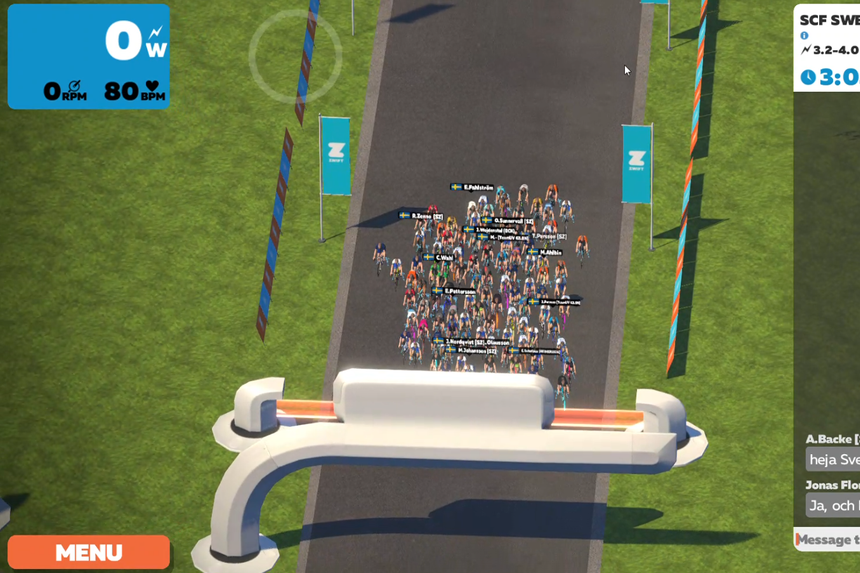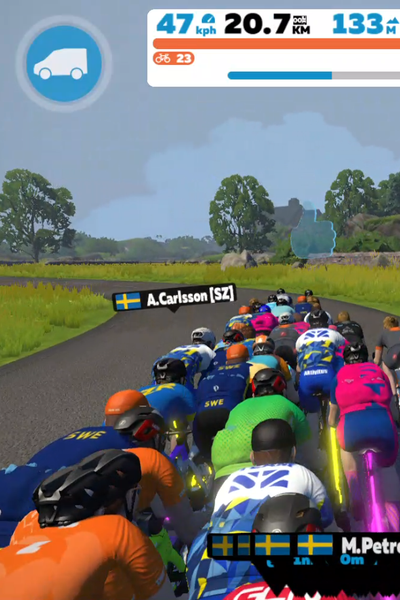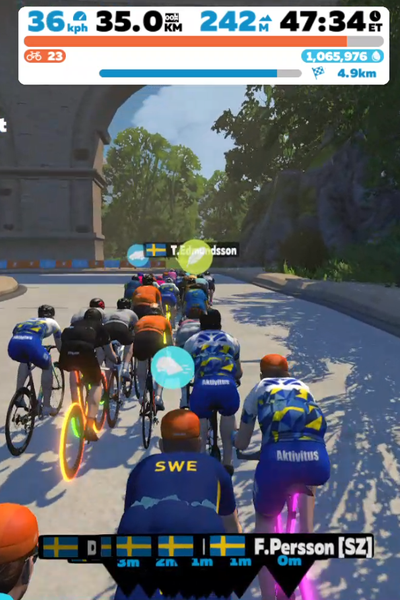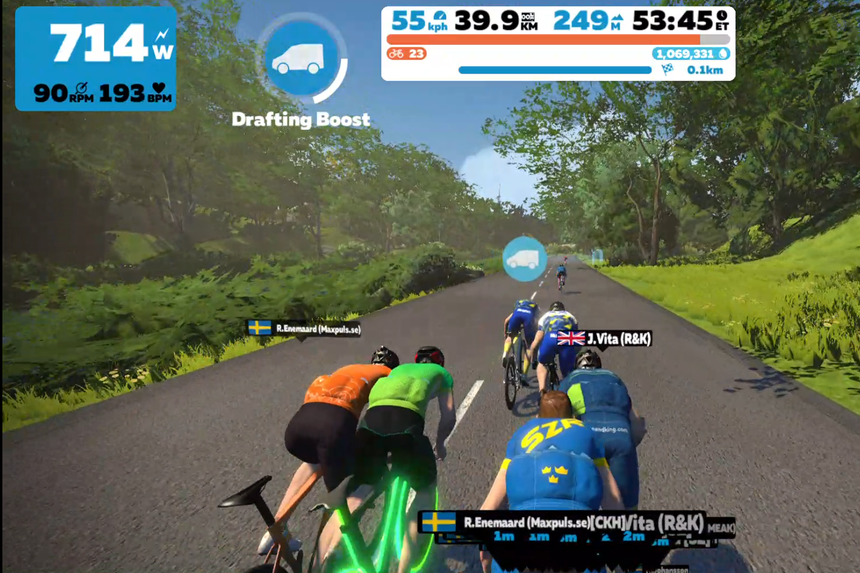This year has seen a large increase in indoor cycling in many countries, with lots of riders turning to E-Racing as an alternative to outdoor events cancelled due to the current global pandemic. The platform many have chosen for this being Zwift, which just today (December 9th, 2020) will be hosting the first ever UCI Esports World Championships.
With this change in racing format, it has led us at Team PFP Sweden to consider what different approaches might be necessary to think of when looking at Bike Fitting for E-Racing specifically. Without the requirements of aerodynamics or bike handling/steering should riders consider a different riding position to provide more optimal racing performance?

UCI regulations
Firstly, it should be noted that the bike position does have to adhere to the same rules as conventional bike racing, as per the UCI Cycling Regulations 11.12 which state “bicycles used for cycling esports races shall be (i) bicycles as defined in part 1 of the UCI Regulations.” This means especially with a road bike that the saddle setback and saddle angle have some limits which must be adhered to as defined in the UCI Technical Regulations (Articles 1.3.013 & 1.3.014). The cockpit positioning is less regulated however, perhaps giving more possibility in terms of adjustments in this area.
Is aerodynamics important?
When thinking of outdoor riding performance, one of the first things on most riders minds these days is aerodynamics. Optimising this often involves trying to create a position with a lower frontal area to reduce drag forces. However, aerodynamics is a consideration which does not apply at all indoors, with the rider’s position not currently affecting their drag in E-Racing platforms such as Zwift. In fact, it is possible that trying to create a position which is actively poor aerodynamically may be of benefit.


The benefits of a higher cockpit
With a position which exposes more of the torso/head as a frontal position, the effect of cooling devices such as fans may have increased benefit; allowing better body temperature regulation and helping to improve performance. This would require the cockpit position to be set in a higher configuration; and would be in great contrast to outdoor specific positions. Therefore, it could be a challenge to achieve this position on many racing bikes, where they are intentionally made with low frame stacks to allow these aerodynamic positions. Perhaps this is room for yet another type of bike frame, one specifically for E-Racing, N+1…?
Another potential benefit of this higher cockpit position could be in giving a more efficient pedal stroke through reduced requirements of hip and knee flexion at the top of the pedal stroke. High levels of flexion in these joints often leads to reductions in power output, which outdoors can be mitigated through aerodynamic gains. Indoors however when aerodynamics is not a consideration, there is no benefit in doing this and so opening these joints up is likely to only improve pedalling efficiency and thus power output.
Saddle positioning for indoor riding
Whilst some restrictions apply to the saddle fore position due to the UCI regulations, it would perhaps be more interesting with indoor riding to consider a further aft saddle position anyway. This would reduce levels of knee flexion at the top of the pedal stroke, allowing the knee extensors to contribute to pedalling more effectively earlier in the pedal stroke due to them being at a more optimal length for force production. This pedalling position could also perhaps help in limiting angular deceleration of the pedal through top dead centre, giving a smoother pedal stroke through more sustained angular momentum. Given the higher cockpit position this then would have little detriment to hip function, as the rider would already be in a more extended position too and therefore would allow effective force contributions from the hip extensors during the power phase.

Adapting to an indoor position
It is worth noting that it would perhaps take some adaptation to these types of changes for some riders to get used to, given that it would be a big change to many who would be more familiar with a ‘low and long’ configuration from racing outdoors. However, for those who wish to make indoor racing a primary goal these adaptations may be worth contemplating. For riders just using E-Racing for training purposes towards their outdoor season, it is perhaps best to ride in their general position to allow muscle adaptation in these settings which they will normally race. Although many of these riders will use different settings to their road/TT positions over winter months for CX or MTB racing, so a different setup for E-Racing is perhaps not so unusual an idea when taken in this context.
Final thoughts
These are just a small selection of the variables that can be considered when thinking about racing indoors. Various other areas could also be evaluated with this in mind, such as differences in saddle interaction indoor vs outdoor; potential increased mediolateral load on joints due to less tilt of the bike; and no requirements of upper body contributions to bike handling (currently…).
As the popularity of this style of cycling continues to grow, we feel these areas will become of even greater importance to the Bike Fitting industry and can present some interesting areas for development of indoor cycling performance. Hopefully this has given you some ideas on the different demands biomechanically on riding indoors. If you wish to discuss any of this further with us please feel free to reach out, we’re always happy to talk cycling/bike positioning!
Iain Findlay
Lead Bike Fitter at PFP Sweden
If you would like any more information about positional coaching or any of our other services please get in touch.